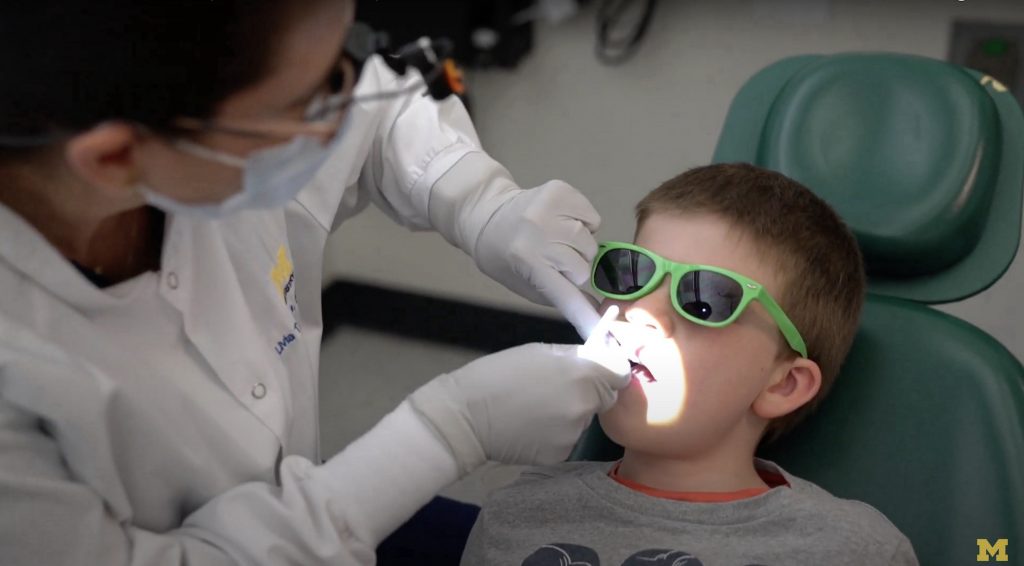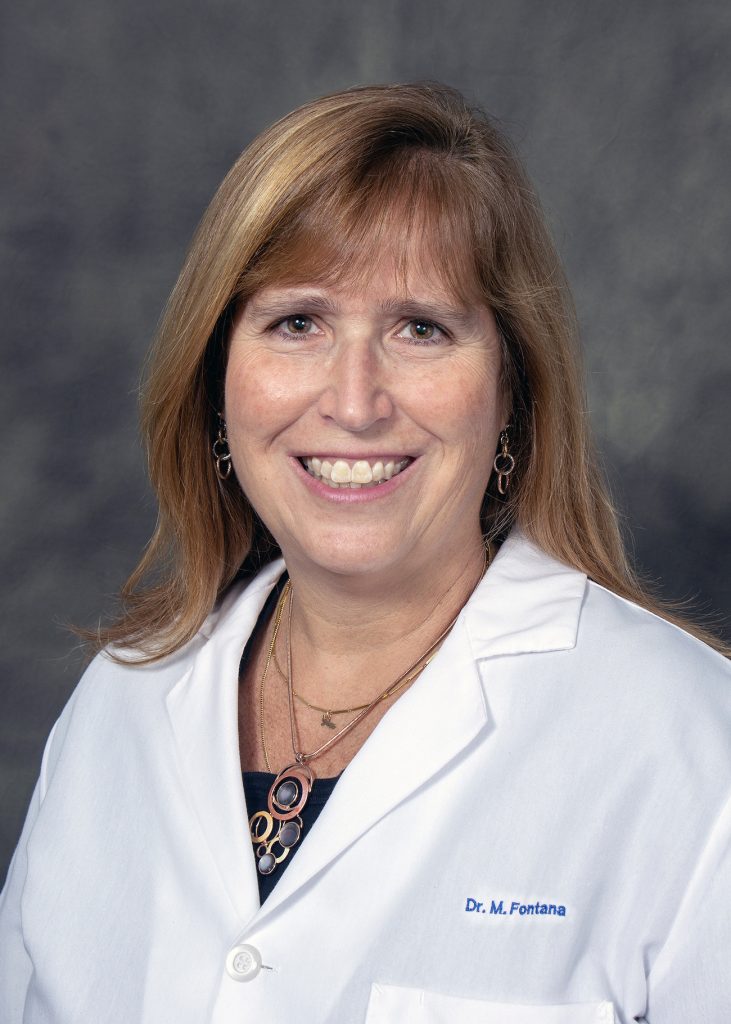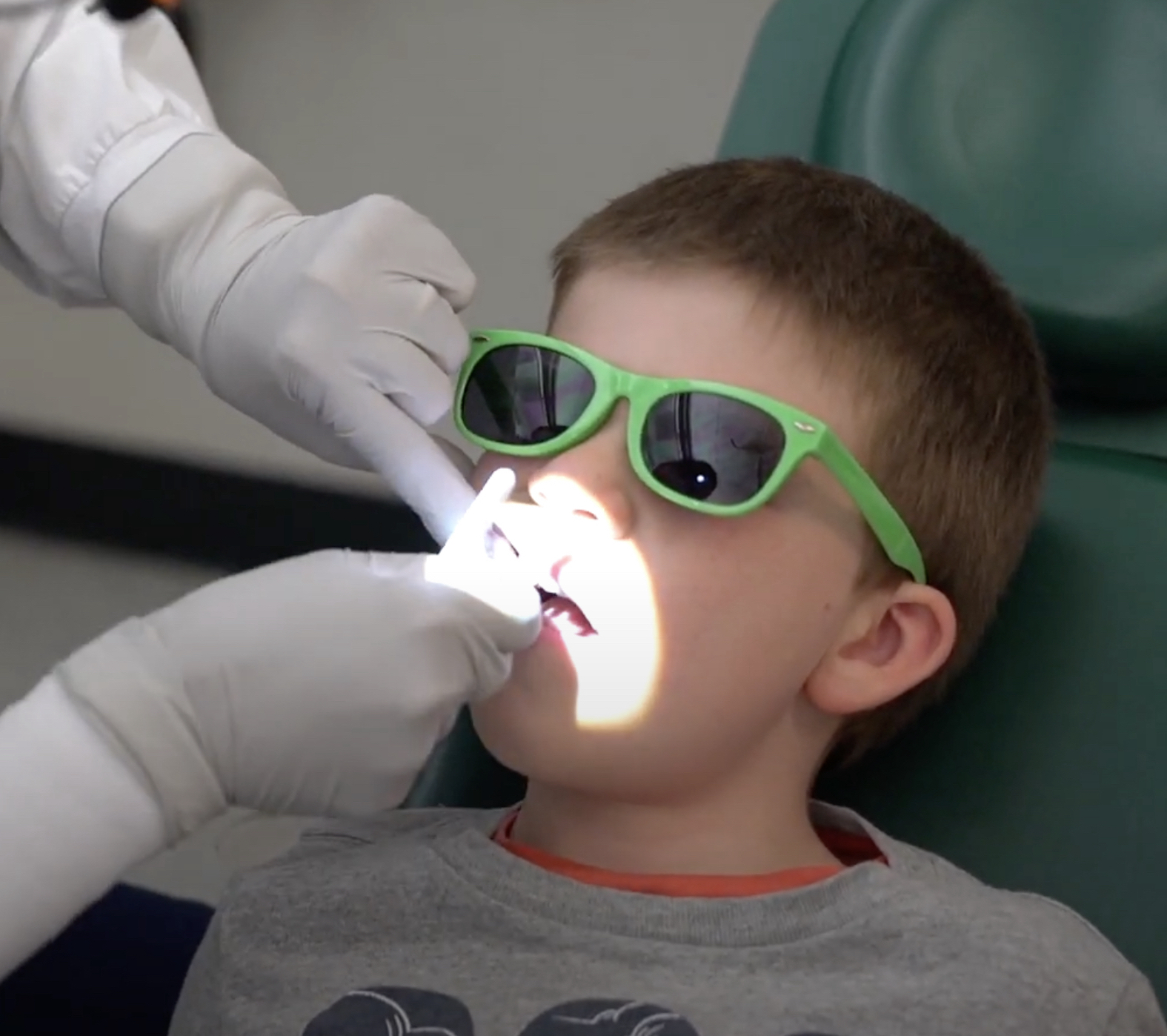New study led by School of Dentistry professor documents effective treatment for early childhood tooth decay6 min read

Ann Arbor, Mich., March 12, 2024 – A major clinical trial led by a University of Michigan School of Dentistry professor has shown that silver diamine fluoride (SDF) is effective in stopping tooth decay when applied to the teeth of young children.
Dr. Margherita Fontana led a team of researchers in the multi-year study of whether the topical liquid is effective in stopping cavities for children ages 1 to 5 with severe tooth decay. The interim results, published in the journal Pediatric Dentistry, found that SDF was effective in 54 percent of children treated with the solution, while caries were arrested in only 21 percent of children treated with a placebo.
The study was designed to provide the necessary data for a Food and Drug Administration (FDA) claim of caries arrest; if successful, it would be an important step that could make SDF more widely available in the U.S. for treating tooth decay in young children. In this country it is cleared by the FDA only for treating dental sensitivity, but it has been used off label in the U.S. to help manage caries and it has been approved for that purpose in other countries for decades. Silver in SDF kills cavity-causing microbes while fluoride helps rebuild and strengthen teeth. It is particularly effective in the treatment of young children with severe disease because it can be easily and painlessly swabbed onto cavities.

“Current treatments for severe early childhood caries rely on restoration and tooth extraction, which can involve general anesthesia,” said Fontana. “These interventions are expensive, cavities often return, and anesthesia can have long-term effects on a developing brain. We didn’t really have any other options until recently. SDF is a game changer.”
The study was funded by the National Institute of Dental and Craniofacial Research (NIDCR), part of the National Institutes of Health.
Fontana is the Clifford Nelson Endowed Professor of Dentistry in the Department of Cariology, Restorative Sciences and Endodontics. She is recognized internationally as a leading scientist in the field of cariology, the study of tooth decay and how cavities develop and can be controlled, and has an extensive clinical research background in childhood caries management.
More than 800 children with severe early childhood caries were treated with SDF, then received a second treatment six months later. The interim findings reported in this initial paper focused on about 600 children at the six-month mark. Some of the children in the study were treated at the U-M School of Dentistry and locations around Michigan, as well as New York, Iowa and Indiana. Sites included Head Start centers, medical and dental settings, schools, Federal Qualified Health Centers and other partnering organizations.
The new paper is based on a preliminary report that was planned for the six-month mark of a longer study. Because the planned interim analysis revealed that the study had met its primary goal of showing that SDF was effective in halting the progression of cavities, the trial was stopped early. Ending a trial early can allow particularly effective interventions to move toward FDA approval and faster availability for patients.
Dr. Dena Fischer, director of NIDCR’s Center for Clinical Research and the Clinical Trials and Practice-Based Research Program, said SDF marketing authorization from the FDA for treating dental cavities could lead to SDF becoming more widely available. That in turn could make it more acceptable among providers, patients, and parents, and make it more likely to be covered by insurance. “Increasing patients’ access to caries treatment is essential for reaching children who are most in need,” she said.
This first report will be followed by a more extensive analysis of data in coming months. Researchers are assessing SDF’s effects on caries arrest in a higher number of children, as well as tooth pain, quality of life and potential side effects. Patient and parent satisfaction are being evaluated because SDF can darken the color of cavities, which may not be aesthetically pleasing. Also, while SDF was significantly effective, researchers will study why not every cavity responded to the treatment.
Fontana praised the collaboration of the several entities involved in the research. The team of researchers led by Fontana included faculty members, dentists, dental hygienists, staff, students and data analysts at the U-M School of Dentistry, New York University, the University of Iowa and the University of Indiana. At the U-M dental school, team members were Emily Yanca, Clinical Research Project Manager; Dr. Carlos González-Cabezas, the Richard Christiansen Collegiate Professor of Dentistry and Associate Dean for Academic Affairs; faculty members Drs. Livia Tenuta, Marcia Campos, Elisabeta Karl and James Boynton; cariology lab manager Susan Flannagan; dental hygienists Maimoonah Riaz, Elizabeth Pitts, Taylor Cezon, Kristin Miller and Meredith McEachern; and research assistants Andrew Chen, Chris Oshana and Shelby Yesney.
“This study took a large team of committed researchers, including a group from here at the School of Dentistry, working diligently over several years on this very important problem,” Fontana said. “It is gratifying to see this portion of the results now published so that the research can gain a wider audience that will help tackle the problem of childhood caries on a much wider scope.”
Tooth decay affects nearly 46 percent of children in the United States, according to the Centers for Disease Control and Prevention. It disproportionately affects Hispanic and non-Hispanic Black children and children from lower-income households.
“Dental caries is one of the most prevalent chronic diseases among children in the U.S. and the world, and one of the most common unmet healthcare needs of poor children,” Fontana said. “The disease has long-term dental, medical, societal, economic and oral health consequences related to quality of life, particularly for young children with severe disease. If SDF was approved by the FDA for caries arrest this would be would be highly innovative, given how few products have been approved by the FDA specifically to prevent or arrest dental caries. Improved access to this simple treatment could result in a reduction of disparities and improvements in oral health.”
The new study’s abstract can be found on PubMed. An NIH press release provides additional information.
###
The University of Michigan School of Dentistry is one of the nation’s leading dental schools engaged in oral healthcare education, research, patient care and community service. General dental care clinics and specialty clinics providing advanced treatment enable the school to offer dental services and programs to patients throughout Michigan. Classroom and clinic instruction prepare future dentists, dental specialists and dental hygienists for practice in private offices, hospitals, academia and public agencies. Research seeks to discover and apply new knowledge that can help patients worldwide. For more information about the School of Dentistry, visit us on the Web at: www.dent.umich.edu. Contact: Lynn Monson, associate director of communications, at [email protected], or (734) 615-1971.


